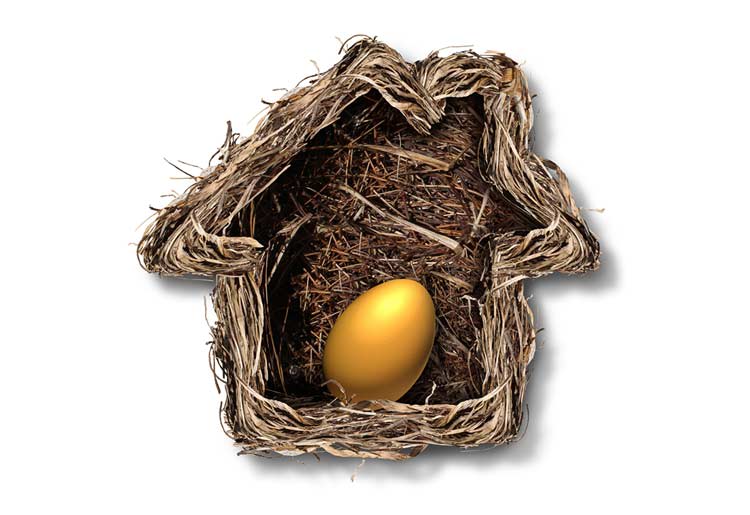
A no-closing-cost refinance (also commonly referred to as a no-cost refinance or no-cost refi) is just like a standard mortgage refinance, except for one key difference: the lender agrees to drop all closing costs, and in exchange it will charge a higher interest rate or add all the closing costs into the total mortgage balance so that the borrowers pays them off over the life of the loan.
When Would a Lender Agree to Refinance Without Closing Costs?
Homeowners typically choose to refinance for 1 of 3 reasons: to take advantage of a lower interest rate; to turn an adjustable-rate mortgage into a fixed-rate mortgage for more financial certainty; or to capitalize on increased home value.
Refinancing involves getting a lender to agree to pay off your old mortgage, and in exchange to offer you a new mortgage at a lower rate. A well-established rule of refinancing is that it is only worth it if the rate on your new mortgage is at least 2 percentage points lower than the old one, although many finance professionals now say it can be worthwhile at even 0.5 points lower. The calculation depends on closing costs: the upfront fees charged by a lender to close a mortgage or refinancing.
Closing Costs and Fees
Closing costs include things like application and underwriting fees, government taxes and fees, and title policy, survey, and appraisal fees. In the case of a refinance, these fees typically amount to around 1-2% of the loan amount. If, for example, a borrower refinances a loan balance of $200,000, they can expect the closing fees to amount to $2,000 to $4,000.
How a No-Cost Refinance Works
As with a regular refinancing, you should assess whether a no-cost refinancing can save you money over the lifetime of your mortgage, then shop around to find which lenders are offering the most competitive rates.
Once you’ve found suitable lenders, it’s time to talk to them (by phone, email or in person) and discuss the terms of your refinancing. Just like with a new mortgage, certain aspects of your refinance can be brought up for negotiation. In some cases, the lender may offer to waive your closing costs in return for a higher interest rate. You can also suggest a no-cost refinance.
Aside from waiving your closing costs, you should expect to hand over much of the same documentation as when you applied for that original mortgage. The lender will want to see that you are creditworthy and that you have the income and savings to be able to pay off your loan. It will ask for tax statements, recent pay stubs, bank and investment statements, and other documentation testifying to your financial status. It will also need to see personal documents, such as your driver’s license, and you will need to give it permission to carry out a credit check.
The key is to be as prepared as possible. The more work you do beforehand to improve your credit score and your home’s value, the more leverage you will have in negotiating your no-cost refi.
When is it a Good Idea?
A no-closing-cost refinance is a good idea if you stand to save more from not paying any closing costs than you will end up spending on the higher interest rate.
As a general rule, a no-cost refinance makes sense for borrowers who are planning to leave their home within around 5 years or will probably refinance again within that same 5-year period. If you’re planning to keep the terms of your refinance for any longer than that, your interest rate repayments will likely end up exceeding those initial savings. Of course, you’ll need to do your own calculations based on your circumstances and on the rate the lender is willing to offer you in return for waiving closing costs.
Another reason to consider a no-cost refinance is if you’re unable to afford the upfront payment. If refinancing makes sense, but you don’t have a few thousand dollars sitting around to pay the closing costs, you might still decide that the terms of your no-cost refi are better than the terms of that original mortgage you agreed to several years earlier when interest rates were much higher.
If you can afford the closing costs and are planning to stay in your home for a long time, then it’s generally recommended to settle on a standard refinance with closing costs. While an upfront payment of a few-thousand dollars might not seem like the best use of your money right now, the lower interest rate means you’ll get a return on your investment within a few short years.
Look Out for Other Costs
Some lenders may offer you a variation of a no-cost refinance, such as one that cancels all lenders fees (including origination fees for evaluating and preparing your loan), but that still requires you to pay third-party fees for things like appraisal and taxes. When sitting down to agree to the terms of your refinance, make sure to read carefully over all the fine print. Each lender is different, and one lender’s definition of a no-cost refinance might not be the same as another’s.
Find out more about some of the leading mortgage loan companies in these in-depth reviews.

